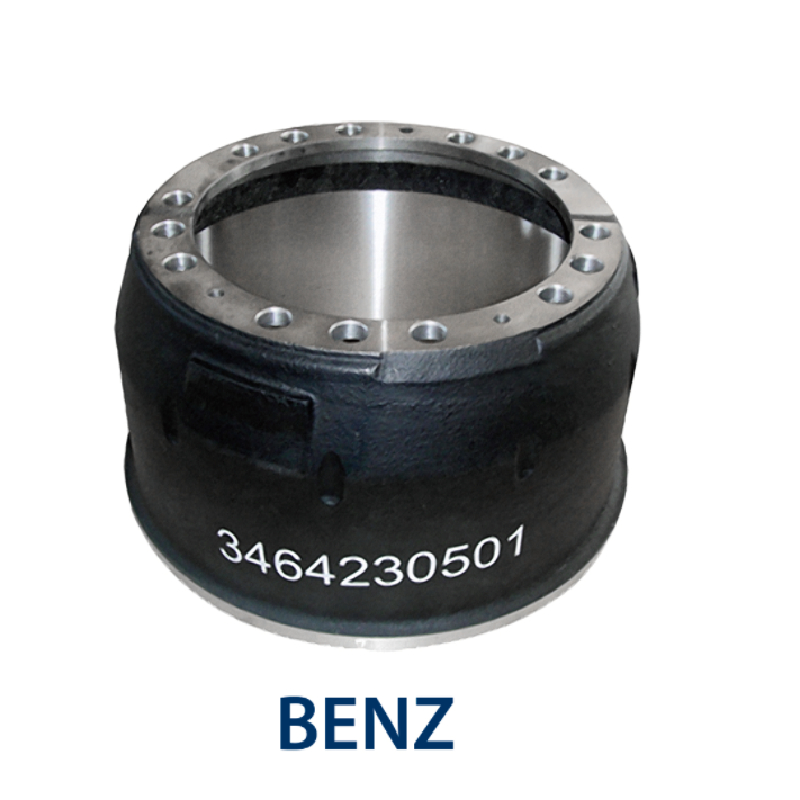ਨਵੰ. . 11, 2024 01:26 Back to list
Understanding the Mechanism and Function of Hydraulic Brake Drums in Vehicles
Understanding Hydraulic Brake Drums A Comprehensive Overview
Hydraulic brake drums are a critical component in many vehicles, especially in heavy-duty applications, such as trucks, buses, and construction equipment. They play an essential role in ensuring safety by providing reliable braking performance. This article delves into the functioning, advantages, and maintenance of hydraulic brake drums.
What Are Hydraulic Brake Drums?
Hydraulic brake drums are part of a braking system that uses hydraulic fluid to actuate the brakes. Unlike disc brakes, which utilize calipers and pads, brake drums rely on a different mechanism. When the driver presses the brake pedal, hydraulic fluid is forced from the master cylinder through the brake lines into the brake drum assembly. This pressure activates the brake shoes, which expand outward against the inner surface of the drum, generating friction to slow down or stop the vehicle.
The Components of Hydraulic Brake Drums
A typical hydraulic brake drum system consists of several key components
- Brake Drum A robust, circular metal component that rotates with the wheel. It withstands high temperatures generated during braking. - Brake Shoes Curved components that press against the inside of the brake drum to create friction. They are lined with a friction material that enhances stopping power.
- Wheel Cylinder A hydraulic component that converts hydraulic pressure into mechanical force to push the brake shoes against the drum.
- Master Cylinder The main hydraulic unit that generates pressure when the brake pedal is depressed. This pressure travels through the brake lines to the wheel cylinder.
- Spring Mechanism Springs are used to retract the brake shoes when the braking pressure is released, ensuring that the shoes do not drag against the drum.
Advantages of Hydraulic Brake Drums
1. Effective Stopping Power Hydraulic brake drums provide substantial braking force, making them suitable for heavy vehicles that require reliable stopping performance.
hydraulic brake drum

3. Cost-Effective Generally, hydraulic brake drum systems are less expensive to manufacture and repair compared to their disc counterparts, making them a cost-effective choice for vehicle manufacturers and fleet operators.
4. Long Service Life Brake drums can endure more wear and tear over time compared to brake rotors if maintained properly, leading to lower replacement costs over the lifespan of the vehicle.
5. Self-Adjusting Mechanism Many hydraulic drum brake systems come with a self-adjusting feature, which ensures optimal performance over time without requiring constant manual adjustments.
Maintenance of Hydraulic Brake Drums
Routine maintenance is crucial for ensuring the long-term effectiveness and safety of hydraulic brake drums. Here are a few key maintenance tips
- Regular Inspections Vehicle owners should regularly inspect the brake drums for signs of wear, distortion, or cracking, which can compromise performance and safety.
- Check Brake Shoes It’s essential to monitor the condition of the brake shoes. Worn shoes should be replaced promptly to maintain effective braking power.
- Bleed the Brake System Air trapped in the hydraulic system can reduce braking efficiency. Bleeding the system to remove air and ensure proper fluid levels is an integral part of maintenance.
- Inspect Brake Fluid Checking the hydraulic brake fluid for cleanliness and proper levels is crucial, as contaminated fluid can lead to braking issues.
- Lubricate Moving Parts A little lubrication on the return springs and other moving components can help prevent sticking and ensure smooth operation.
Conclusion
Hydraulic brake drums are vital for the safe operation of many vehicles, especially those in demanding roles. Understanding their components, advantages, and maintenance needs will help vehicle owners and operators ensure optimal braking performance and safety on the road. Regular care and timely repairs can make a substantial difference in both the efficiency and longevity of hydraulic brake systems. As automotive technology evolves, ongoing innovation will likely enhance the performance and reliability of hydraulic brake drums, continuing to provide safety for drivers and their passengers.
-
HINO Industrial Solutions - ¡Ң���ຽ��е��������˾ | Advanced Efficiency&Customization
NewsJul.13,2025
-
HINO Industrial Efficiency Solutions - ¡Ң���ຽ��е��������˾
NewsJul.13,2025
-
HINO Industrial Solutions - ¡Ң���ຽ��е��������˾ | Advanced Technology&Reliability
NewsJul.13,2025
-
HINO Industrial Efficiency-Jiangsu Hino Industrial|Productivity Optimization&Cost Reduction
NewsJul.12,2025
-
HINO-¡Ң���ຽ��е��������˾|Advanced Industrial Solutions&Energy Efficiency
NewsJul.12,2025
-
Premium Brake Drum Iveco – Durable Drum Brake Drum & Brake Shoe Solutions
NewsJul.08,2025
